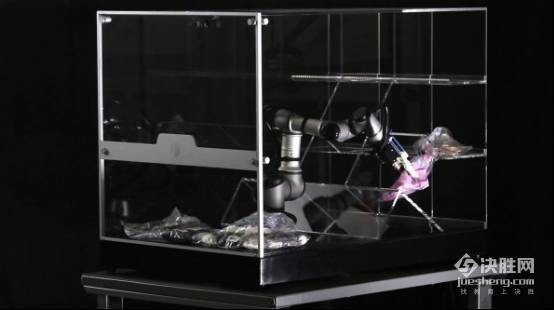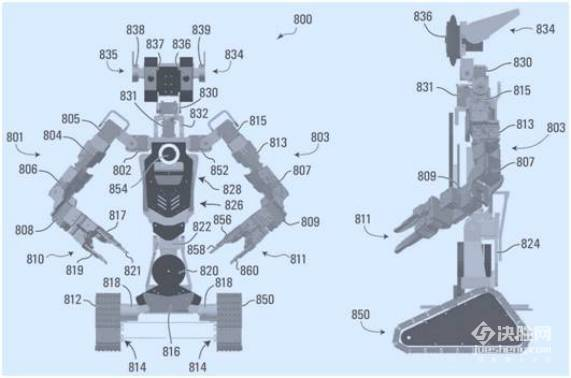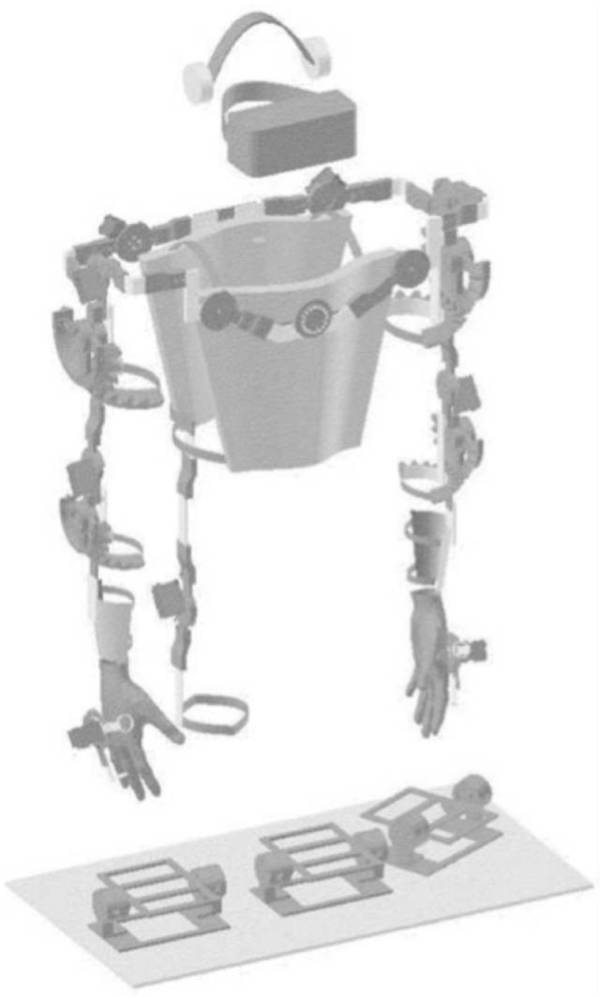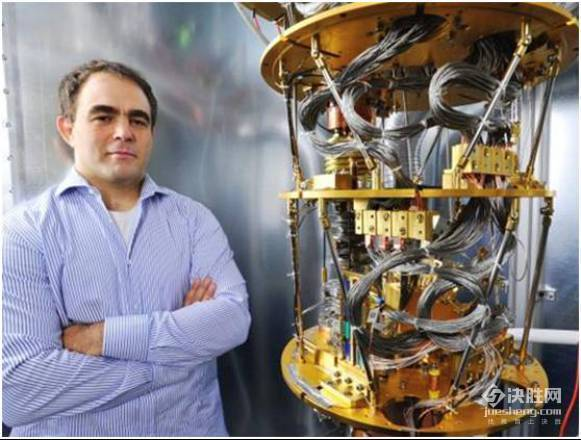Canada Kindred AI: Manual Assistance to Accelerate Machine Learning
Based on the idea that human demonstrations will significantly accelerate machine learning, the human VR operator of Canadian startup Kindred AI is teaching robots to perform new tasks with the ultimate goal of creating a new type of artificial intelligence.

This robotic arm occasionally uses manual control to learn how to master different objects.
A mysterious Canadian startup, Kindred AI, is teaching robots how to do difficult and dexterous work at superhuman speed. They pair robots with human "operators" - "operators" wear VR heads and hold movements Track controller.
This technology gives us a pleasant surprise to see how humans will work in sync with machines in the future. It shows us that the power of automation systems can be further enhanced with human collaboration.
Many people are worried about robots and artificial intelligence about stealing humans' jobs, but there are still many things that robots can't do.

A patent map filed by Kindred, a company pioneered by a group of quantum computing pioneers that aims to build advanced AI systems to control and train robots.
Not long ago, Kindred AI demonstrated their robot to the MIT Technology Review and said it plans to release a product for retailers in the coming months. Their long-term vision is more ambitious.
Kindred hopes that this kind of manual assisted machine learning will produce new and more powerful artificial intelligence.
Currently, Kindred is testing the ability of traditional industrial robotic arms to grasp and place small items that are not good enough, such as small pieces of fabric, to see if they can be made faster and more stable than normal. The robotic arm occasionally asks the human team for help. The operators will use the VR head to observe the difficult steps and temporarily manipulate the robot arm.

A patent map filed by Kindred, showing the exoskeleton with sensors and motion parts, and the operator wearing an exoskeleton to control the remote robot
“Operators can see, hear and feel what the robot sees and hears. When the operator makes an action, the robot will follow,†said Kindred co-founder and CEO Geordie Rose (he is also D-Wave Co-founder).
“This allows us to tell robots how to act like humans. Although it can't be said that humans do the best in all the behaviors of robots, such as placing objects in a given position, humans are understanding tricky and unknown. The situation is still the strongest."
Kindred's system uses some machine learning algorithms and will automatically determine which algorithm can help it achieve a specific target, such as grabbing an object. If no algorithm seems feasible, the system will seek human help.

Most importantly, machine learning algorithms can learn the actions of human operators. To do this, Kindred uses "enhanced learning" -- a technique that allows machines to learn and experiment with specific attempts and exercises.
Rose said that their robots grab twice as fast as humans, but it doesn't matter if the robots work independently. Therefore, human intervention is necessary, and one person can operate multiple robots at the same time.
Rose added that Kindred is exploring a variety of operating systems with human interventions, from where people click on images to tell the robot where to grab the basics of the object, and to wear a full-body mechanical exoskeleton to control the advanced intervention of humanoid robots. Operators can learn how to effectively control the robot remotely. "You will not be used to when you first use the control device, but the plasticity of the human brain is very strong, and you will adjust slowly."
The technique was inspired by Suzanne Gildert, a former senior researcher at D-Wave and currently the Chief Scientific Officer of Kindred.

The patent map filed by Kindred shows how many operators can control multiple robots through the Kindred artificial intelligence cloud computing system.
The company has been secretly running for several years until the details of the patents submitted by Gildert were exposed online, attracting attention. The patent describes a plan to combine various remote operating systems with machine learning. Indeed, Kindred's technical vision is much more than just a better sorting and picking robot.
“If you let the robot keep trying and have an artificial intelligence system that supports machine learning behind the scenes, then you can test different AI models to see which ones work better,†says Gildert. “Ultimately, I thought that if you could let humans demonstrate tasks for robots, there is no reason why robots don’t operate like humans.â€
The most eye-catching is that Kindred's patent even deals with the feasibility of allowing animals (such as monkeys) to operate such systems. Gildert said it was just an idea and the company did not hire any monkeys. But she also said that the company did have a robotic cat trained through intensive learning and wandering around the office all day.

Geordie Rose, co-founder and chief technology officer (CTO) of well-known quantum computer company D-Wave, is brewing new ideas: training and controlling an intelligent robot army using artificial intelligence and exoskeleton systems
Kindred is a bit different. Its founder is a physicist, not a specially trained robotic expert or computer scientist. Rose argues that this brings them a unique and valuable perspective. "For computer scientists, the boundaries between the simulated world and the real world are very vague. And we prefer to do something in the real world with real robots."
The concept of human-computer cooperation pursued by Kindred seems to have great potential. Ken Goldberg, a professor of robotics and machine learning at the University of California at Berkeley, said that human demonstrations can significantly accelerate machine learning. Goldberg used a similar approach in his research on surgical robots, adding that making robots learn from humans is a very hot research area. Goldberg said, "This is the core reason why I believe that robots have an infinite future. The demonstration role of human beings can bring about great progress."
However, the technology of machine learning through human remote control is not difficult to achieve. Sangbae Kim, an associate professor at the Massachusetts Institute of Technology who studies remote-controlled humanoid robots, said that mapping human actions to machine behavior is extremely complicated.
“The first technical difficulty lies in tracking human actions. It is very important to closely monitor all the subtle movements of the human body. This is very difficult because we are endoskeleton animals,†Kim said. “The bigger challenge is to have a deep understanding of every detail of every step in the human decision-making process, but many of the thinking processes are actually subconscious.â€
But Kindred's founding team was not discouraged. "Our goal is to solve the cognitive system of humans," Rose said. “All life follows a specific pattern of behavior, and we have to establish the same set of codes of conduct for the robot.â€
However, some experts doubt whether Kindred has the ability to match the goals they claim. Tim Field, the inventor of the Willow George Laboratory and the Hephae remote control robot, said that the machine learning technology that the patent needs to implement far exceeds the existing machine learning technology, the learning process. The data and other resources needed are simply astronomical.
For example, Google's experimental robotic arm needs to train 800,000 times to successfully take out objects from a basket, allowing the operator to perform the same task 800,000 times to train the robot? This is almost impossible.
Oregon State University robot expert Bill Smart said the patent presented a good idea, but it was very difficult to implement. In addition, he believes that it is difficult for humans to operate the robot smoothly, because the dynamics of machine compliance and the dynamics of muscle obedience are not different.
A dog body harness is a piece of equipment consisting in part of straps that surround the dog's torso. It is used to guide, hold, and lift the dog or to utilise its pulling power. It reduces tension on the neck when they pull,and provides free breathing during daily walks. In sports such as skijoring, where the dog's pulling power is utilised, the harness provides effective use of force while maintaining freedom of movement.
Dog Body Harness,Small Dog Harness,Customized Dog Harness,Harness For Small Dog
Yangzhou Pet's Products CO.,LTD , https://www.paiqipets.com